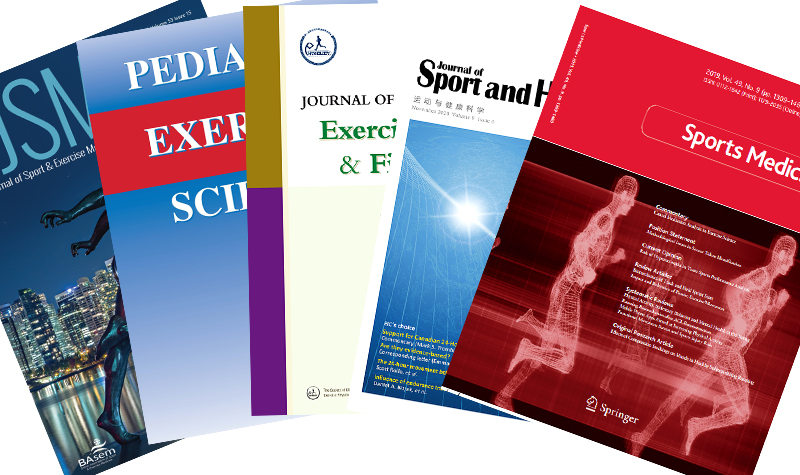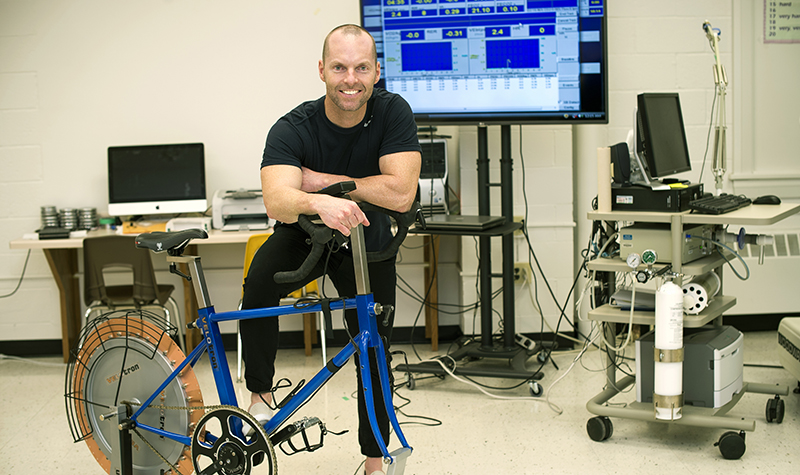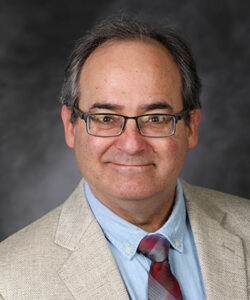UND Kinesiology’s growing impact
Temporal trends in research output, citation rates and graduate-student success show a program punching above its weight

If you’d like to learn more about global fitness trends over time, and you do so by typing “fitness” and “temporal trends” into a search engine, you’ll notice something as soon as the results roll into view:
Many of the top studies that show up right away — four of the first eight on Bing.com, for example, and many others on the pages that follow – involved researchers at the University of North Dakota.
That’s no accident. Thanks to the shared interests of faculty who wound up at UND in recent years, and the partnerships and research projects that have resulted, the University’s Kinesiology program in the College of Education & Human Development has become a national leader in this key area of fitness and health.
Across dozens of studies, Kinesiology graduate students and faculty at the University have assessed topics such as young people’s cardiorespiratory fitness over time, young people’s handgrip strength over time, adults’ handgrip strength (and six-minute walking distance) over time and similar topics.
In many cases, the studies use measures such as handgrip strength and standing-broad-jump performance that are easy to gauge, have been tracked by researchers around the world for decades and are proven proxies for overall fitness and health.
Also in many cases, the systematic reviews that the UND researchers conduct result in sample sizes that number in the millions. “Temporal Trends in the Standing Broad Jump Performance of 10,940,801 Children and Adolescents Between 1960 and 2017,” for example, is the headline in Sports Medicine that describes one recent UND-led study.
“We’re proud of our reputation in this area,” said Grant Tomkinson, UND professor of Kinesiology and Public Health Education, “because we’ve put out papers that not only are being published, but are being published in top-ranking journals.
“That means the work is getting cited more often. For example, one paper we had published in the British Journal of Sports Medicine in 2019 has been cited 100 times, and even that is about eight times the journal’s average.”

Aiming high
Moreover, Kinesiology graduate students at UND are listed as lead authors on several of the studies. In the past year, for example, two UND kinesiology alums – Faith (Dooley) Radermacher and Trevor Dufner – each saw their UND master’s-degree thesis research published in Sports Medicine, the No. 2-ranked journal in the field.
Those publications also led to stories in local and regional media as well as UND Today.
Clearly, “the faculty in Kinesiology are also helping to ensure that their commitment to research is being passed on to the next generation,” said Cindy Juntunen, dean of the College of Education and Human Development at UND..
“Their inclusion of students in research, and their support of student publications, is a testament to the ways in which teaching and research each inform and improve the other. Students with a commitment to scholarship will find top-notch mentors in the Kinesiology faculty.”
Besides the British Journal of Sports Medicine and Sports Medicine – the No. 1- and No. 2-ranked journals, respectively, in sports medicine – journals that have published the UND Kinesiology team’s research over the past two years include Journal of Sport & Health Science, Journal of Exercise Science & Fitness, Pediatric Exercise Science and BMC Public Health, among others.
And partly as a result, Kinesiology research at UND — previously unranked in this survey — ranked 51–100 in the world (out of 485 sports science units worldwide) in Shanghai Ranking’s 2020 Global Ranking of Sport Science Schools and Departments. That put UND’s program on par with the ones at Penn State, Ohio State, Texas A&M and the University of Washington, and ahead of the programs at many large U.S. universities.
“Universities are ranked by several indicators of academic or research performance, including papers indexed in Web of Science, total citations, citations per paper, papers published in top 25 percent journals, and percentage of internationally collaborated papers,” Shanghai Ranking’s methodology page reports.
The UND program’s growing visibility likely results from several factors, said John Fitzgerald, associate professor of Kinesiology and co-author of many of the recent studies.
One is the public’s continuing interest in fitness and its relationship to health. Every parent wants to learn how to help their children stay healthy, and every grown-up hopes to slow the aging process, if possible, by staying active, Fitzgerald said.
The UND studies that track proxies such as handgrip strength can give very strong indications of a population’s overall health.
Fitzgerald’s own status as a new dad helped point his research in that direction. “I have a young family, so the health of the people around me is so important,” he said.
“It’s been fun to take my passion for sport and, through these studies, apply it to general health.”
Another reason for the program’s high publication rate is the fact that while deep reviews of the literature can be very challenging, they’re also highly useful and illuminating, making them great projects for graduate students and faculty alike.

On top from Down Under
Third and perhaps most important was Tomkinson’s coming to UND in 2015, Fitzgerald said.
“Grant brought international attention to our program, because he’s a leader in this space, and it’s very powerful research,” Fitzgerald said.
“His being here gives us a lot of credibility; after all, he’s probably published 60 articles in the past five years. That’s a lot of attention coming to our program, our department and our college.”
Tomkinson came to UND from Australia, where he’d grown up, competed as a track athlete at the state and national levels, and earned his doctorate in Human Movement from the University of South Australia. So, “I’ve always been interested in health, fitness and physical activity,” he told UND Today.
In Australia, he turned that interest into (among other jobs) serving as chief lead investigator for Australia’s 2014, 2015 and 2016 Report Cards on Physical Activity for Children and Young People.
Meanwhile, as happened with Fitzgerald, fatherhood intervened. “So I start thinking, is there a way that I can try to give kids the healthiest start possible?” he said. “And one way to do that, I realized, is to learn some lessons about where we’ve been with fitness in the past, and what kinds of policies and practices might help us get fitness right.”
In 2013, Tomkinson analyzed 50 studies that included 25 million children in the United States, Europe, Australia, New Zealand and Asia. The result, as National Public Radio reported: “Children around the world are less aerobically fit than their parents were as kids, a decline that researchers say could be setting them up for serious health problems once they’re grown up.”
At UND, Tomkinson realized, his own knowledge of cardiovascular fitness would be complemented by Fitzgerald’s parallel work, which was on muscular strength. Those skillsets show up in studies such as this one, which lists both Tomkinson and Fitzgerald as among the co-authors: “Temporal trends in the sit-ups performance of 9,939,289 children and adolescents between 1964 and 2017,” published last year in the Journal of Sports Sciences.
Tori Kaster, the study’s lead author, was a UND graduate student at the time. She’s now a research physiologist at the Human Nutrition Research Center in Grand Forks.
Another advantage that the region offers is that the K-12 schools in both North Dakota and Minnesota seem especially receptive to the findings of realistic fitness-and-health studies, Tomkinson said.
One such study from Australia’s University of Newcastle described a program that improved high-school students’ fitness, academic performance and mental health, all over the course of only six months. The program? Three short (10-minute) but intense teacher-led workouts a week – not an impossible dream in our region’s schools, Tomkinson said.
“My hope is that in a few years’ time, we’ll be starting to affect the health of local communities through physical activity, by showing both the feasibility and effectiveness of these kinds of fitness-based interventions,” he said.
As for adults, Tomkinson is intrigued by the situation in Japan, where fitness measures – almost alone among developed countries – are tracking up rather than down (“Temporal trends in handgrip strength for older Japanese adults between 1998 and 2017,” Tomkinson, Fitzgerald et al., Age and Aging, February 2020).
Plus, “they’re living longer in Japan, and they’re living healthier for longer,” Tomkinson said. Might that be due in part to the population’s fitness practices, and are there other aspects of Japanese culture that also could come into play?
“Maybe we can learn some lessons from our neighbors across the pond,” he said. “And maybe those lessons can improve our health.”



